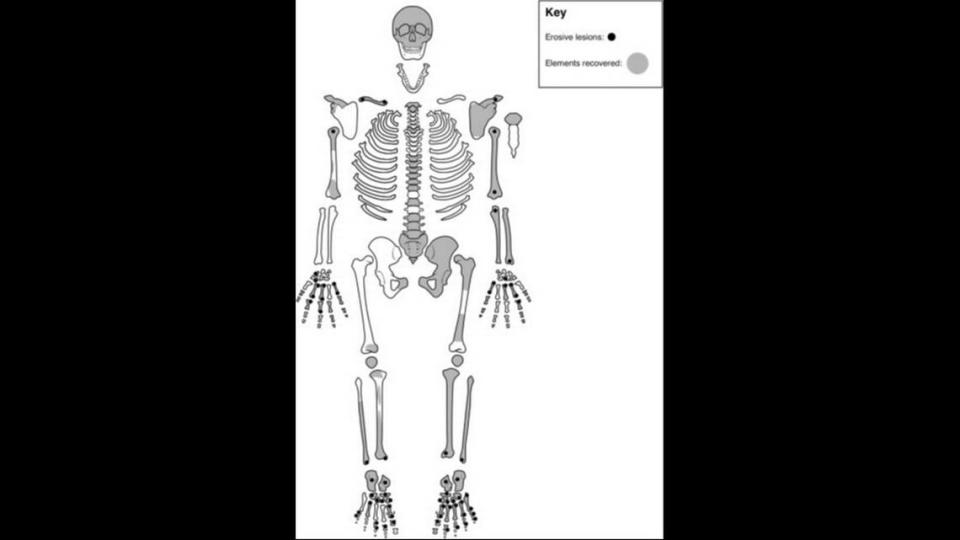Ancient Egyptian woman had holes on her bones. Experts say it’s rare case of disease
As crews dug through the soil along the Nile in Southern Egypt, skeletons slowly emerged from the dirt.
The area had once been an ancient graveyard, but looting and housing projects had damaged the final resting places.
One skeleton, however, was remarkably intact — but was covered in holes.
The site, called Sheikh Mohamed, operated from 1750 to 1550 B.C., researchers said in a study published in the March issue of the International Journal of Paleopathology.
More than two dozens tombs made up the Nubian Pan-Grave cemetery, the researchers said, a type of cemetery common among the Medjay nomadic people that lived in the eastern deserts of Egypt more than 3,000 years ago, according to the University of Chicago.

Researchers have excavated 15 tombs at the site, but they were shocked when they reached Tomb 5 and saw nearly 60% of the skeleton inside had been preserved, according to the study.
The body lay in “an elongated, nearly rectangular tomb with rounded corners,” the researchers said, and was surrounded by “a deteriorated leather garment, still retaining partially intact woven beadwork, with beads made of ostrich eggshell, faience and stone.”
There was also a mother-of-pearl bracelet and ancient Nubian and Egyptian pottery, according to the study.
The bones belonged to a woman between the ages of 25 and 30, the researchers said, and with so much of her skeleton intact, they looked closer at the small bones in her hands and her feet.
They were riddled with lesions, pock marks and holes.
The diagnosis? She had rheumatoid arthritis.
“I’m used to seeing osteoarthritis — it’s one of the most common joint conditions that we see archaeologically,” study author Mindy Pitre told Live Science. “It looks like bone on bone where you get this smooth look that resembles ivory. In rheumatoid, you don’t get that whatsoever. The minute I recognized it, I noticed that the lesions didn’t look typical.”

Rheumatoid arthritis only impacts between 0.5 and 1% of adults between the ages of 30 and 50 globally today, the study authors said, making it a rare disease in the modern era.
In ancient records, it’s even more rare.
“This case of (rheumatoid arthritis) is important because few archaeological examples exist,” the researchers said. “At least 1000 complete skeletons need to be examined to find one clear case of RhA.”
Rheumatoid arthritis, or RhA, is a chronic autoimmune disease that can be caused by genetics or environmental factors and attacks the body’s joints, according to the National Institutes of Health.
The condition would have made the ancient woman’s life very difficult, the researchers said.
“Based on their bony presentation, this individual’s joints (particularly the hands and feet) may have felt achy, stiff and tender and would have been prone to swelling, all of which may have had an impact on hand function and ability to carry out daily activities,” the researchers wrote. “Their pain would have increased over time, and they would have been more at risk for chronic conditions such as heart disease.”
The researchers did not say whether they believed the condition led to the woman’s short life.
“It wouldn’t be surprising that, archaeologically speaking, it would be pretty rare to have in ancient Egypt,” Pitre told Live Science. “Especially since folks weren’t living long enough in the past to manifest these types of lesions.”
The cemetery was located near the city of Aswan, about 550 miles south of Cairo.
Discovery at ancient Roman factory reveals it was transformed — into something morbid
3,600-year-old red lipstick — the oldest ever found — discovered in Iran, study says
1,900-year-old bone — filled with hallucinogenic seeds — is ‘rare’ find. What’s it for?
Family lived in small house 1,100 years ago in the UK. It’s just been unearthed

